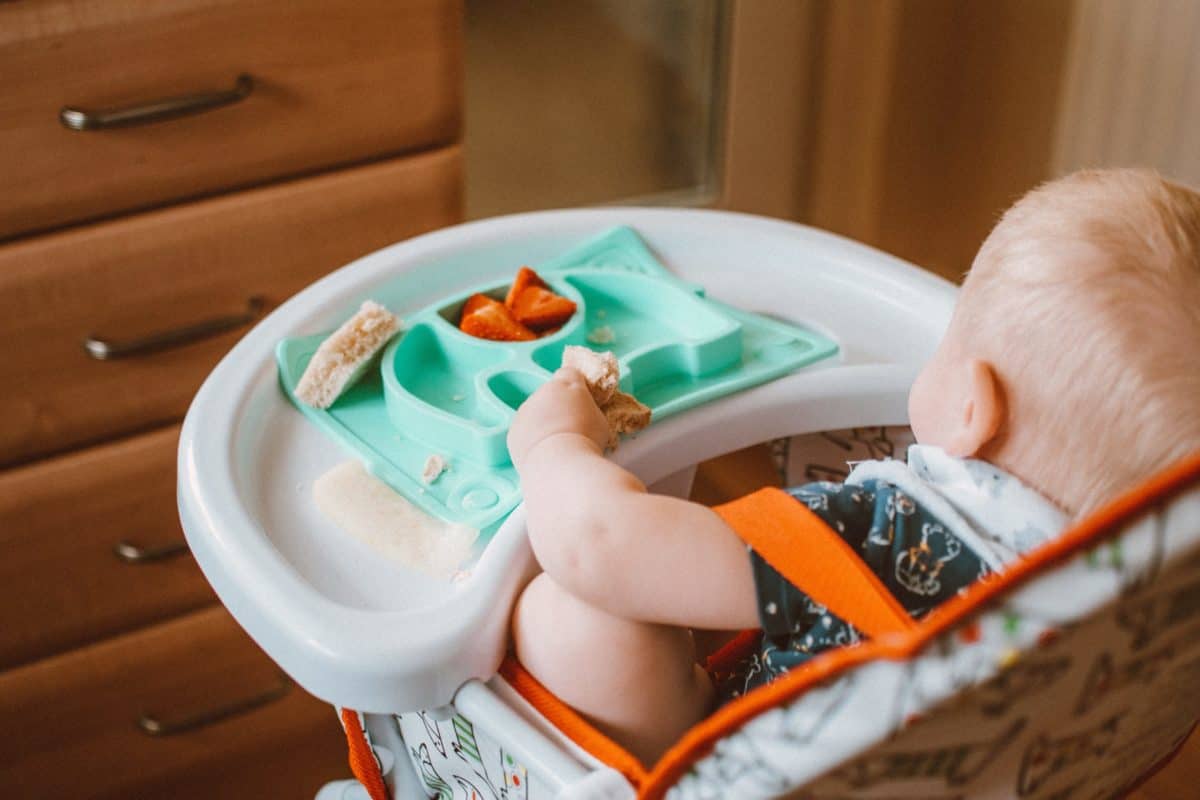Most children do not meet the recommended daily intake of fruits and vegetables. Many parents can relate to the battle of trying to feed their child fruits or vegetables and the resistance that follows. So, how do you get your child to accept fruits or vegetables, and where do you start? With a little guidance and a few simple steps, you can begin to incorporate new fruits and vegetables onto your child’s plate. The key is to prioritize exposing your child to healthy fruits and vegetables from a young age.
What do we know?
Children develop their food preferences early on in life. They learn through direct contact with foods, such as tasting, feeling, seeing, and smelling. It is common to experience a child who may have more food dislikes than food likes. There are two terms used to describe this type of behavior: food fussiness and neophobia. Food fussiness is when a child has selective food intake, including rejection of both familiar and unfamiliar foods; conversely, food neophobia is fear or avoidance of new foods (1). These traits emerge between the ages of 2 and 5 years, although this time is also instrumental for children’s development of new food preferences (1). Therefore, it is important to expose children to new tastes that can promote familiarization and liking of unfamiliar foods; this action can help reduce food avoidance behaviors over time.
What does research say about taste exposure? The taste exposure strategy is where children are offered the same foods frequently. This strategy is reported as the most effective way to promote the intake of unfamiliar vegetables in children (1). Numerous studies have determined that children increase their intake of vegetables after five exposures; although, on average, children will need between eight to ten exposures at a regular interval (1). As a parent, it may be challenging to achieve this level of exposure because your child may express an initial dislike of the food provided. If your child shows an unpleasant taste for a particular food after repeated attempts, you may consider serving the food in other ways. Exposure to this food in a different environment may benefit your child because taste is not the only sensory feature when trying unfamiliar foods.
How do sound, sight, touch, and smell play a role in exposure?
The taste exposure strategy is proven to have a positive effect on promoting the intake of vegetables in children. However, non-taste sensory features, including sound, sight, touch, and smell, also play an essential role in the eating experience. These methods look like hearing the name of the food, chewing sounds, the appearance of food, texture in their hands or mouth, and the smell of the food. Infants’ first experience with food texture can be when you offer table foods; this hands-on learning may promote acceptance of new foods during this period. When your child enters toddler and preschool years, research shows that these non-taste sensory elements should continue to be combined to help them become familiar with fruits and vegetables, especially when children are picky eaters (1).
Visual appearance and texture are often the first observations a child makes about food. It is essential to incorporate additional visual exposure, including picture books and tactile-play activities, as this activity can benefit children more than taste exposure alone (1). Incorporate these activities both during mealtimes and outside of mealtimes. Studies show exposing children to pictures of foods maximizes their visual familiarity with the foods (1). Keeping all of this in mind, we still need to meet children at their comfort level. Pressuring children to try a specific food is not beneficial and may lead to food aversions. As a parent, you must be the person who provides fruits or vegetables; it is up to your child if they choose to eat it or not.
Ways to expose your child to new foods:
- Pick a goal fruit or vegetable and offer it for at least two weeks to ensure they get enough exposure. Make sure this food is something you and other family members like to eat and goes well with the meals you are serving that week.
- Head over to the library or order a few picture books that feature fruits or vegetables. This action will increase the familiarity of the foods through visual exposure.
- Take your children shopping at the grocery store with you. Have them help pick out the fruits and vegetables you are getting for the week.
- When cooking a meal, have your child help prepare the food by chopping, peeling, or mixing. This hands-on learning is great non-taste exposure and will help familiarize them with the food.
- Serve meals family style and have your child serve a small portion for themselves or others at the table.
- Make crafts that include unfamiliar fruits or vegetables. This type of sensory play is an excellent way to engage non-taste senses.
- Prepare fruits and vegetables in various ways. Try steaming broccoli for one day, roasting the next day, and uncooked the other day. Use different cooking methods to make these textures so that your children have the opportunity to experience the way they prefer food.
- Try serving unfamiliar foods in small amounts. Small portion sizes seem less overwhelming on their plates.
Sources
- V. Cosmi, S., K. Ventura Alison, J., Harris, G., Nicklaus, S., M. Sandell, B., Johnson, S., DA. Dev, C. (1970, January 01). Developing Healthy Food Preferences in Preschool Children Through Taste Exposure, Sensory Learning, and Nutrition Education. Retrieved from https://link.springer.com/article/10.1007/s13679-018-0297-8




